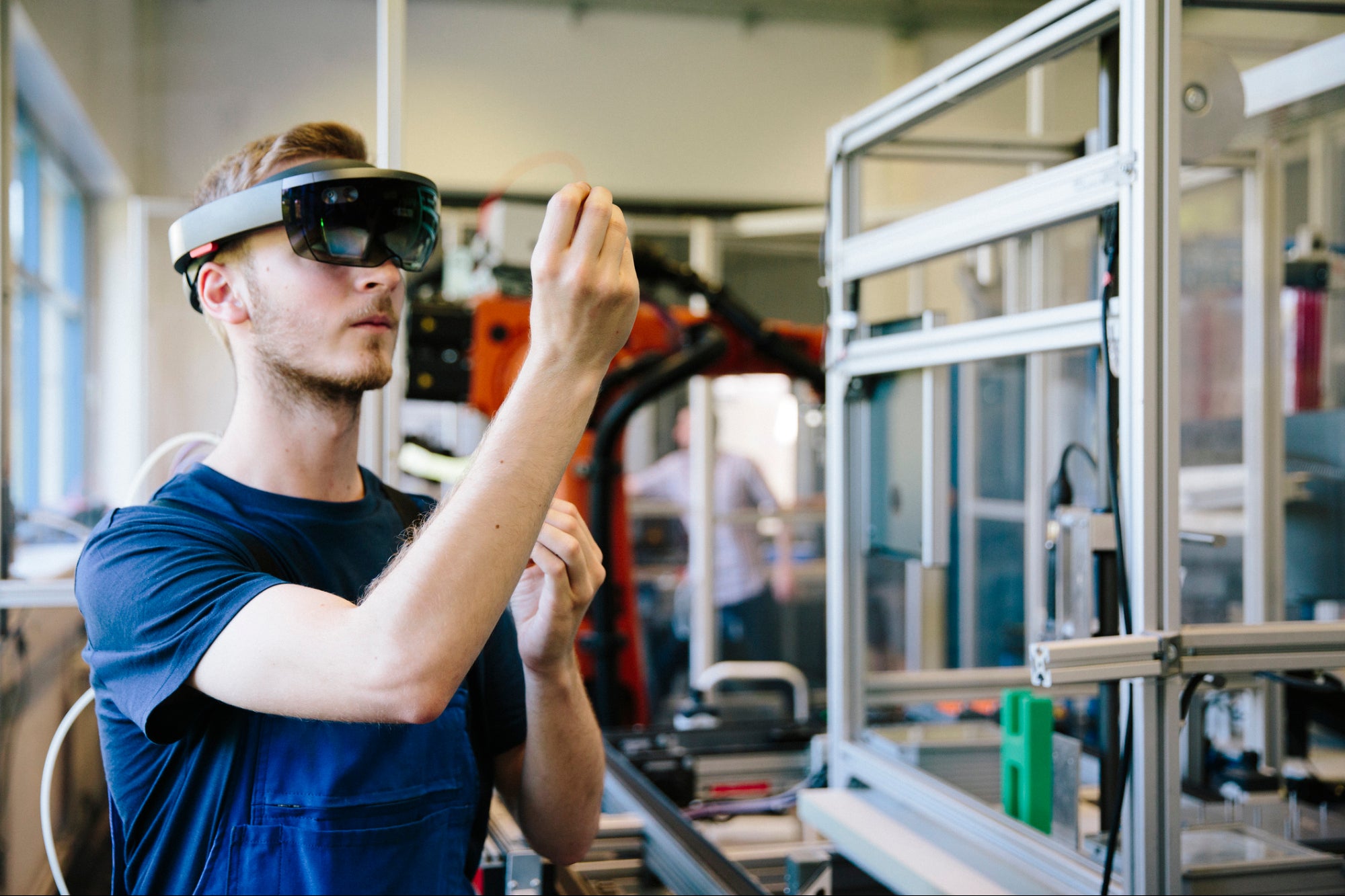
August 18, 2020 6 min read
Opinions expressed by Entrepreneur contributors are their own.
Artificial intelligence (AI) is the most disruptive innovation of our lifetime. Its adoption has grown 60 percent in the last year, according to an April 2020 report by Narrative Science. The report’s authors say the technology is having a “significant and imminent impact on everything from company strategy, to business operations, to job functions.”
So what are some of AI’s implications in the new normal, one in which American entrepreneurs find themselves saving cash, working from home and wearing masks everywhere they go?
Currently, for entrepreneurs, the most popular AI-powered solutions deal with predictive analytics (24 percent), machine learning (21 percent), language processing (14 percent) and voice recognition and response (14 percent), according to the same Narrative Science report.
However, AI will also be adapted for seismic changes in business practices, health protocols and regulatory rules. In other words, companies will use AI in a way that delivers what consumers readily want. In fact, a 2017 study conducted by M.I.T. found that 84 percent of enterprises expect AI to obtain or maintain a competitive advantage, while 72 percent believe the technology will have a significant impact on product offerings.
With that kind of data in mind, how exactly do entrepreneurs like yourself stand to benefit? While a number of new, exciting AI-centric uses exist, three of the most popular can be found below. Have at ‘em.
1. AI helps consumers spend wisely
Consumers aren’t what they used to be. Swag is out, and “thrifty” is in, and AI will help in this regard. You see, AI organizes and analyzes the world’s mountain of data in real-time, including banking data. Fintech ventures are using this to help users cut spending, find deals and save money.
That’s beneficial given that, these days, Americans are looking for more bargains than ever before. A May 2020 report from the Federal Reserve found that 37 percent of Americans don’t have immediate access to $400 for an unexpected emergency, while 15 percent would need to expense it on a credit card.
On a positive note, though, Americans’ savings rate jumped to 33 percent in April as people stayed home, the highest since the 1960s, according to data from the Bureau of Economic Analysis. AI agents that simplify finances are becoming more common on iStore and Android.
Banking apps like Moven and Simple let users track spending, budget limited funds and increase savings via real-time, personalized recommendations. Cleo is an app similar in purpose, but it targets millennials and Generation Z in that its chatbot communicates with humor and wit. The AI-powered agent actually expresses emojis and memes to resonate with younger folks, most of whom are skeptical of banks.
Related: 3 Ways Entrepreneurs Can Use AI to Boost Their Business
2. AI makes Wi-Fi both reliable and fast
Working from home appears to be a trend that’s likely to stick around for a good while. With uncertainty surrounding the release of an FDA-approved vaccine, companies are now using AI to improve the shelter-in-place experience for their employees.
According to LinkedIn’s jobs report for April 2020, the hardware and networking industries remain strong, in spite of economic troubles. The hiring rate actually rose 2.3 percent for the month. Why? Incredibly, those within them are using both the internet and remote technologies to work and look for jobs, despite many needing to file for unemployment.
Furthermore, you’ve battled with slow internet before, right? If so, there’s a good chance it’s Netflix’s fault. The movie provider’s traffic hit all-time highs during the pandemic, according to AT&T. Last year, Netflix alone took up 12 percent of all web traffic.
The California-based company uses AI to personalize movie recommendations. The method accounts for 80 percent of stream time, which means it’s a highly effective measure. From literally thousands of options, based on AI-powered data, the tech company also chooses the most watch-inducing thumbnail for all of its films and TV shows.
Netflix isn’t solely to blame for slow internet speeds, though. Thankfully, AI solves connectivity problems through the smarter routing of users and data, as well as automated troubleshooting and real-time identification of network issues. For example, Juniper Networks’ AI-driven networking recently optimized the Wi-Fi experience for employees at Gap and students and educators at Dartmouth College.
Big retailers, universities and enterprises can suffer from unreliable Wi-Fi because of the sheer number of devices that connect online and to proprietary data centers. AI-driven networking automates troubleshooting and provides real-time insights of web service levels. Incredibly, with Juniper Networks’ AI solution in place, technicians’ visits to Gap stores have dropped 85 percent nationwide.
Related: 3 Ways Machine Learning Can Help Entrepreneurs
3. AI lets users speak to devices like they’re human
Amazon’s Alexa, Apple’s Siri and Google Assistant have been around for years. During that time, voice recognition and response technology have improved significantly. For example, developers have improved natural language processing, which makes AI apps much easier to interact with through daily, conversational interactions. The technology can also better understand a user’s intent, even when words aren’t communicated perfectly.
Nowadays, people can interact with AI agents intelligently and receive personalized responses. Conversational startups like Kensho are using AI to understand and explain complex subjects like politics, finance and government regulations. Such interfaces provide conversational answers in real-time — almost as if the user were speaking to another human being.
Automatic speech recognition (ASR) is growing in sophistication to the point where users can book a flight or hotel through an AI agent. An ASR system can identify the relevant airline or product and proceed to the payment process. Among enterprises, 43 percent said they currently send AI-powered communications to employees. Thirty-five percent said they send AI-powered interactions to customers, according to the aforementioned Narrative Science report.
Humans and AI are working in tandem to produce desired outcomes. As the above examples show, AI has a number of practical use-cases for entrepreneurs and enterprises alike that improve the greater user experience — even amidst the new normal most of us are working to get used to.
This article is from Entrepreneur.com









